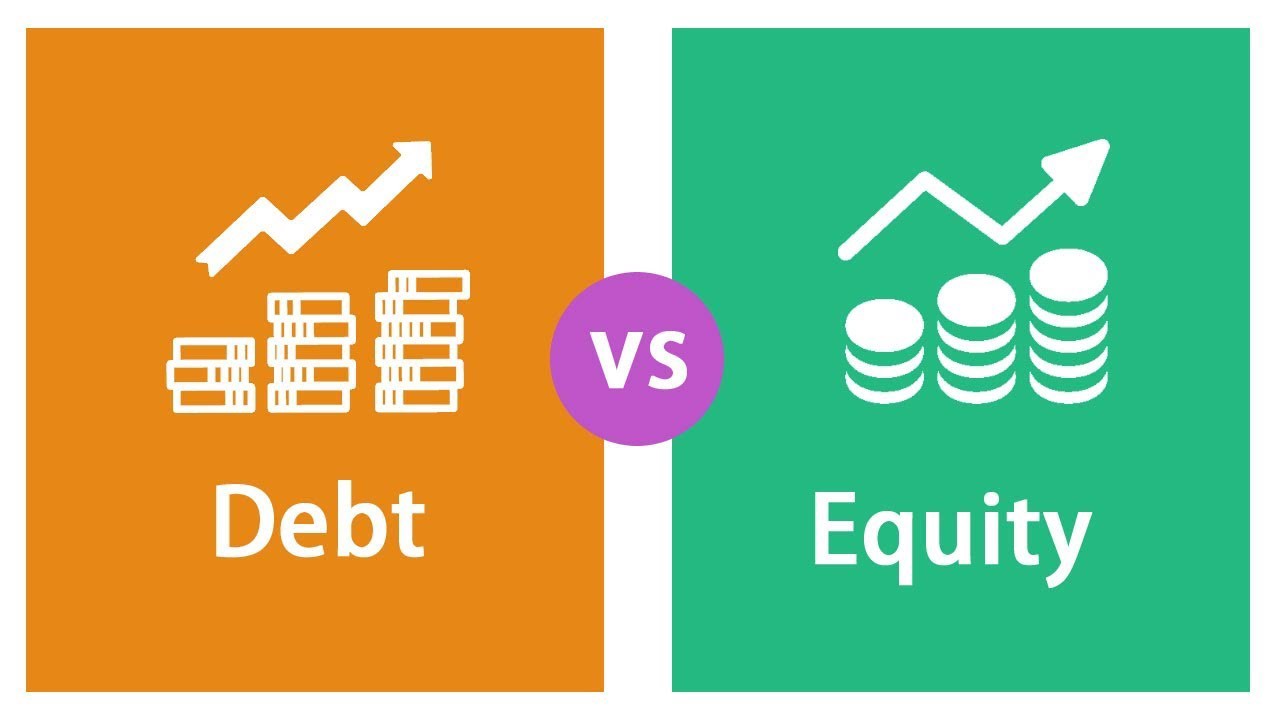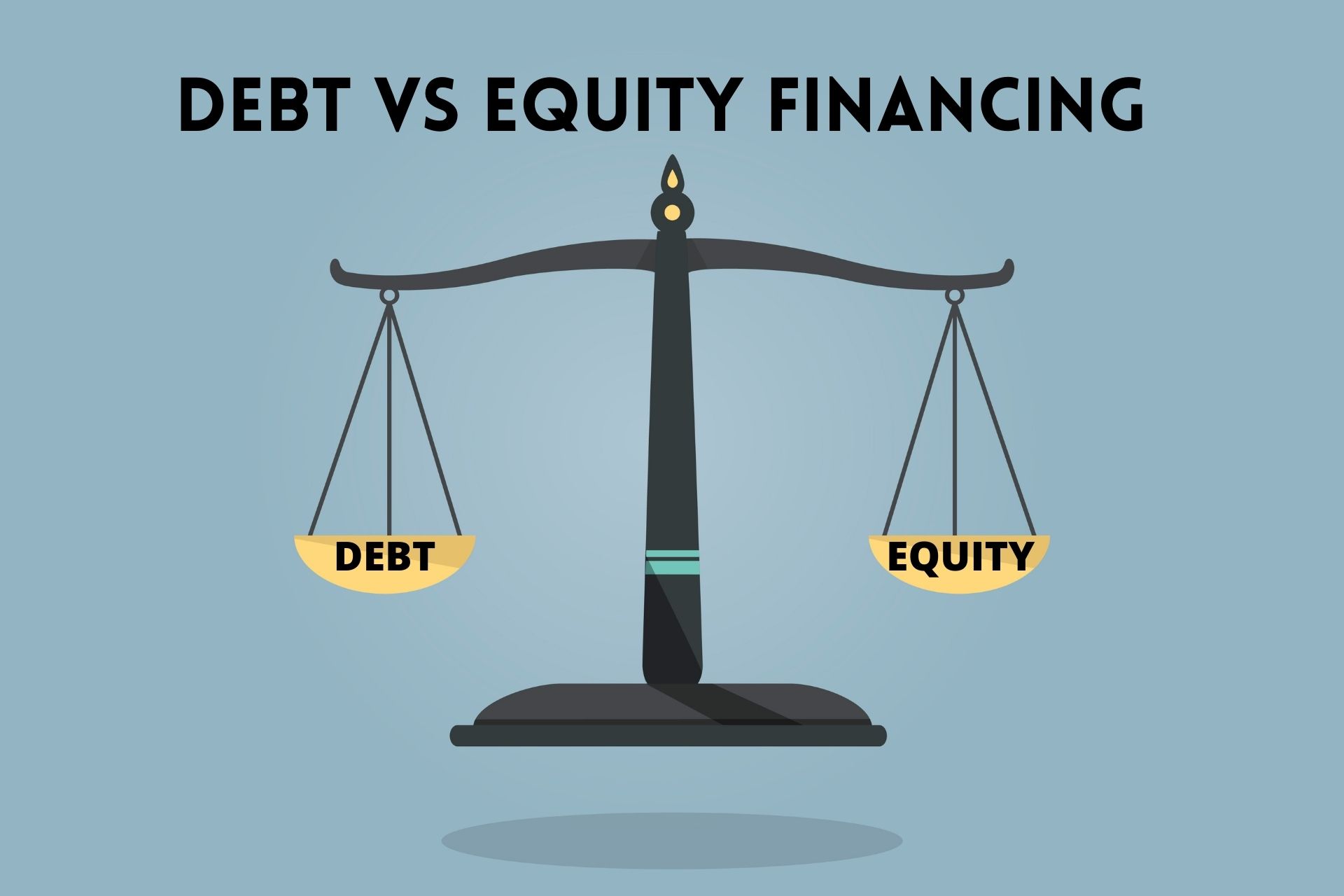Home>Finance>What Is The Company’s Cost Of Debt Financing (RD)?


Finance
What Is The Company’s Cost Of Debt Financing (RD)?
Modified: December 30, 2023
Learn the significance of the company's cost of debt financing (RD) and how it affects its financial stability. Explore various aspects of finance and make informed decisions.
(Many of the links in this article redirect to a specific reviewed product. Your purchase of these products through affiliate links helps to generate commission for LiveWell, at no extra cost. Learn more)
Table of Contents
- Introduction
- Definition of Cost of Debt Financing
- Factors Affecting the Cost of Debt Financing
- Importance of Cost of Debt Financing
- Calculation of Cost of Debt Financing
- Advantages and Disadvantages of Debt Financing
- Impact of Cost of Debt Financing on the Company
- Examples of Cost of Debt Financing in Practice
- Conclusion
Introduction
When it comes to financing a company’s operations and investments, there are various options available, one of which is debt financing. Debt financing refers to raising capital by borrowing money from external sources such as banks, financial institutions, or bondholders. While debt financing can provide immediate funds for growth and expansion, it also comes with a cost – the cost of debt financing, sometimes referred to as the cost of debt or simply as RD.
The cost of debt financing is a crucial aspect of financial management for any company. It represents the interest expense that the company incurs on its outstanding debt. This cost is an important consideration for both investors and lenders as it directly affects the company’s profitability, risk profile, and overall financial health.
In this article, we will delve into the concept of the company’s cost of debt financing (RD), exploring its definition, factors affecting it, calculation methods, and its significance. We will also examine the advantages and disadvantages of debt financing and how the cost of debt financing impacts a company’s financial position and decision-making process. Furthermore, we will provide real-life examples to illustrate the application of cost of debt financing in practice.
Understanding the cost of debt financing is essential for companies to make informed financial decisions while balancing the need for capital with the associated costs and risks. By gaining insight into this crucial metric, businesses can effectively manage their debt obligations, optimize financial strategies, and ultimately drive sustainable growth and success.
Definition of Cost of Debt Financing
The cost of debt financing refers to the expense incurred by a company for accessing funds through debt instruments. It represents the interest rate that the company pays to borrow money from external sources. In simpler terms, it is the cost of utilizing borrowed capital to finance the operations and investments of the company.
When a company issues debt, such as bonds or loans, it agrees to make periodic interest payments to the investors or lenders. The cost of debt financing is calculated as a percentage of the outstanding debt and is typically expressed as the annual interest rate. This rate is often determined based on market conditions, the creditworthiness of the company, and other relevant factors.
The cost of debt financing is influenced by several factors, including the prevailing interest rates, the company’s credit rating, and the terms of the debt arrangement. Higher interest rates and a lower credit rating will generally result in a higher cost of debt financing. Conversely, lower interest rates and a higher credit rating can lead to a lower cost of debt financing.
It is important to note that the cost of debt financing is not limited to just the interest payments. It also includes any fees associated with obtaining the debt, such as origination fees, closing costs, or ongoing administrative fees.
The cost of debt financing has a significant impact on a company’s financial performance and decision-making. It affects the company’s profitability, as higher interest expenses can eat into the earnings. It also affects the company’s risk profile, as a high level of debt can increase the financial risk and decrease the creditworthiness. Furthermore, the cost of debt financing influences the company’s ability to attract investors and lenders, as they assess the company’s ability to meet its debt obligations and generate a return on investment.
In summary, the cost of debt financing is the expense incurred by a company for accessing borrowed capital. It is an important consideration in financial management, as it impacts the company’s profitability, risk profile, and overall financial health. By understanding and effectively managing the cost of debt financing, companies can make informed decisions about their capital structure and optimize their financial strategies.
Factors Affecting the Cost of Debt Financing
The cost of debt financing for a company is influenced by various factors, which determine the interest rate it must pay to borrow funds. These factors play a crucial role in determining the risk associated with lending money to the company and determining the appropriate cost of borrowing. Let’s explore some key factors that affect the cost of debt financing:
- Market Interest Rates: The prevailing interest rates in the market have a direct impact on the cost of debt financing. When interest rates are low, companies can borrow at lower rates, reducing their cost of debt. Conversely, when interest rates rise, borrowing becomes more expensive, leading to an increase in the cost of debt financing.
- Credit Rating: The creditworthiness of a company is also a significant factor in determining its cost of debt financing. Credit rating agencies assess a company’s financial health and assign it a credit rating based on its ability to repay debt. A higher credit rating indicates a lower risk of default and, therefore, a lower interest rate. Companies with lower credit ratings may face higher borrowing costs due to a perceived higher risk of default.
- Debt Maturity: The maturity period of debt is another factor that affects the cost of debt financing. Generally, long-term debt carries higher interest rates compared to short-term debt. This is because long-term debt exposes lenders to higher risks and uncertainties over an extended period. Consequently, companies that choose to borrow over a longer term will often face higher costs of debt financing.
- Collateral and Guarantees: When a company provides collateral or guarantees to secure the debt, it reduces the risk for lenders. This reduced risk often translates into a lower cost of debt financing, as lenders are more confident in the repayment capacity of the company. Collateral can include assets like real estate, inventory, or accounts receivable that lenders can claim in the event of default.
- Industry and Economic conditions: The industry in which a company operates and the overall economic conditions can also impact the cost of debt financing. Companies operating in industries with higher perceived risks may face higher interest rates due to the inherent uncertainties associated with the industry. Likewise, during an economic downturn, lenders may demand higher interest rates to compensate for the increased risk.
It’s important for companies to carefully consider these factors when assessing their cost of debt financing. By understanding the determinants of interest rates and the risk associated with borrowing, companies can make informed decisions about their capital structure and optimize their financial strategies.
Importance of Cost of Debt Financing
The cost of debt financing plays a significant role in the financial management of a company. It holds great importance for both investors and lenders, as well as the company itself. Let’s explore why understanding and managing the cost of debt financing is essential:
- Profitability: The cost of debt financing directly impacts a company’s profitability. By knowing the interest rate it must pay on borrowed funds, a company can accurately assess the impact of interest expenses on its earnings. Higher interest payments reduce the company’s net income, affecting its ability to generate profits and distribute dividends to shareholders.
- Risk Assessment: The cost of debt financing provides insight into the company’s risk profile. A higher cost usually indicates a higher risk associated with lending money to the company. Investors and lenders consider the cost of debt as an indicator of the company’s ability to meet its debt obligations. A company with a high cost of debt financing may be perceived as more risky and could face challenges in attracting further investment or securing favorable lending terms.
- Capital Structure: The cost of debt financing influences the company’s capital structure decisions. Companies must balance their financing mix between equity and debt to optimize their cost of capital. By comparing the cost of debt financing with the cost of equity financing, companies can determine the most cost-effective way to raise funds. A lower cost of debt financing may incentivize companies to rely more on debt, while a higher cost may prompt a shift towards equity financing.
- Investor Confidence: The cost of debt financing affects investor confidence in a company. Lenders and bondholders closely examine a company’s cost of debt as part of their risk assessment. A lower cost of debt financing reflects the company’s strong financial health and creditworthiness, attracting more investors. Conversely, a higher cost may deter potential investors, making it more challenging for the company to raise additional debt capital.
- Strategic Decision Making: The cost of debt financing plays a crucial role in strategic decision making. It influences investment decisions, as companies need to evaluate the potential return on investment against the cost of debt. Additionally, it affects decisions related to mergers and acquisitions, expansions, and other long-term investments. Companies need to consider the impact of additional debt on their cost of debt financing and overall financial stability.
Overall, the cost of debt financing is a vital metric for companies as it affects their profitability, risk profile, capital structure, investor confidence, and strategic decision making. By carefully managing this cost, companies can optimize their financial strategies, attract investors, and maintain financial stability for sustainable growth and success.
Calculation of Cost of Debt Financing
The cost of debt financing can be calculated using various methods, depending on the specifics of the debt arrangement. The most common method is to calculate the yield to maturity (YTM) on the debt instrument. Let’s explore the common calculations used to determine the cost of debt financing:
- Yield to Maturity (YTM): The YTM is a widely used method to calculate the cost of debt financing for bonds and other fixed-income securities. It considers the current market price of the bond, its face value, coupon payments, and the remaining time to maturity. By solving the equation, the YTM represents the internal rate of return (IRR) on the bond, which indicates the effective interest rate the company is paying on the debt.
- Effective Interest Rate: For loans and other debt instruments without a quoted market price, the effective interest rate can be used to determine the cost of debt financing. The effective interest rate considers the total interest payments over the life of the loan, any upfront fees or costs, and the loan’s repayment schedule. It represents the true cost of debt financing by factoring in all associated expenses and payments.
- Credit Spread: The credit spread is another approach to estimating the cost of debt financing. It involves determining the difference between the market interest rate for a risk-free investment, such as government bonds, and the interest rate quoted on the debt instrument. The credit spread accounts for the perceived risk associated with lending to the company and represents the additional interest rate investors require to compensate for that risk.
- Weighted Average Cost of Debt (WACC): The WACC is a broader measure that considers the cost of debt financing along with the cost of equity financing. It takes into account the proportion of debt and equity in the company’s capital structure. The WACC assigns weights to the cost of debt and cost of equity based on their respective market values and calculates a blended rate that represents the average cost of capital for the company.
It’s important to note that the calculation of the cost of debt financing may also incorporate any associated fees or costs, such as origination fees or ongoing administrative fees. These costs are added to the interest expense to provide a more comprehensive measure of the total cost.
While the aforementioned methods provide a general framework for calculating the cost of debt financing, it’s essential to consult with financial professionals or utilize specialized financial software to ensure accuracy and consider any specific terms or nuances of the debt arrangement.
By accurately calculating the cost of debt financing, companies can make informed financial decisions, evaluate the attractiveness of borrowing options, and effectively manage their debt obligations.
Advantages and Disadvantages of Debt Financing
Debt financing offers several advantages and disadvantages for companies seeking to raise capital. Understanding these pros and cons is crucial in determining the most suitable financing options. Let’s explore the advantages and disadvantages of debt financing:
- Advantages:
- Access to Capital: Debt financing allows companies to access a significant amount of capital without diluting ownership. It provides immediate funds that can be used for various purposes, such as expanding operations, investing in new projects, or acquiring assets.
- Tax Benefits: The interest paid on debt financing is typically tax-deductible, reducing the company’s taxable income. This can result in lower overall tax liability, enhancing the company’s cash flow and profitability.
- Retain Ownership and Control: Unlike equity financing, debt financing does not require the company to give up ownership or control. The company maintains full control over its operations and decision-making processes.
- Predictable Payments: Debt financing involves fixed interest payments over a defined period. This predictability allows companies to plan their cash flow and financial commitments more effectively.
- Ability to Leverage: By utilizing debt financing, companies can leverage their existing assets and cash flow to secure additional funding. This can amplify their growth potential and maximize returns on investment.
- Disadvantages:
- Interest Expense: The cost of debt financing includes interest payments that must be made regularly. These interest expenses can increase the company’s financial obligations and reduce its profitability.
- Financial Risk: Taking on debt introduces financial risk to the company. If the company is unable to meet its debt obligations, it may face penalties, legal consequences, and damage to its reputation. Excessive debt can also hinder the company’s ability to borrow in the future.
- Reduced Flexibility: Debt financing involves contractual obligations and restrictions, such as loan covenants, which dictate how the company uses its funds and operates. These constraints can limit the company’s flexibility in responding to changing market conditions or pursuing new opportunities.
- Impact on Credit Rating: High levels of debt can negatively impact a company’s credit rating. This may result in higher interest rates on future borrowings and difficulty in attracting investors or lenders.
- Potential Loss of Assets: In some cases, debt financing may require the company to pledge assets as collateral. If the company fails to meet its debt obligations, it risks losing the pledged assets to the lender.
It’s important for companies to weigh these advantages and disadvantages when considering debt financing. The decision should be based on the company’s financial position, risk tolerance, and growth objectives. By carefully evaluating the pros and cons, companies can make informed financing decisions that align with their overall business strategy.
Impact of Cost of Debt Financing on the Company
The cost of debt financing has a profound impact on a company’s financial position and decision-making process. Let’s explore the key ways in which the cost of debt financing affects a company:
- Profitability: One of the immediate impacts of the cost of debt financing is on a company’s profitability. The interest payments associated with debt financing directly reduce the company’s net income. Higher interest expenses can eat into the company’s earnings, affecting its ability to generate profits and distribute dividends to shareholders.
- Risk Profile: The cost of debt financing is closely linked to a company’s risk profile. Lenders and investors assess the cost of debt as an indicator of the company’s ability to meet its financial obligations. A higher cost of debt financing may imply a higher level of financial risk, leading to a lower credit rating and potential difficulties in attracting future investment or securing favorable lending terms.
- Capital Structure: The cost of debt financing influences a company’s capital structure decisions. By comparing the cost of debt financing with the cost of equity financing, companies can determine the most cost-effective way to raise funds. A lower cost of debt financing may incentivize companies to rely more on debt, resulting in a higher proportion of debt in their capital structure. However, an excessive reliance on debt can increase financial risk and impact the company’s creditworthiness.
- Investor Perception: The cost of debt financing affects investor perception of the company. Lenders and bondholders closely examine the cost of debt as part of their risk assessment. A higher cost may be interpreted as a higher risk, potentially leading to a decrease in investor interest. Conversely, a lower cost of debt financing may signal a lower risk and attract more investors, enhancing the company’s access to capital.
- Flexibility and Cash Flow: High-interest payments associated with debt financing can impact a company’s cash flow and flexibility. A significant portion of the company’s cash flow needs to be allocated to servicing the debt obligations. This can limit the company’s ability to invest in growth opportunities, make necessary capital expenditures, or respond to unexpected market conditions.
- Debt Capacity: The cost of debt financing affects a company’s debt capacity, which refers to the maximum amount of debt it can comfortably take on. As the cost of debt increases, it may become more challenging to borrow additional funds without negatively impacting the company’s financial stability and creditworthiness.
By considering the impact of the cost of debt financing, companies can make informed financial decisions and strike a balance between accessing capital and managing their financial risk. It is essential for companies to carefully analyze their cost of debt financing alongside other factors such as profitability, risk tolerance, and growth objectives to create a financially sustainable and resilient business model.
Examples of Cost of Debt Financing in Practice
To better understand the concept of the cost of debt financing, let’s explore some real-life examples:
- Company A: Company A, a manufacturing firm, decides to raise capital by issuing corporate bonds. The bonds have a face value of $10 million with a maturity period of 5 years. The annual coupon rate is 6%. Based on the market demand and the company’s creditworthiness, the bonds are priced at a slight premium, resulting in a yield to maturity (YTM) of 5.5%. In this case, the cost of debt financing for Company A is 5.5%.
- Company B: Company B, a technology startup, secures a bank loan of $2 million to fund its expansion plans. The loan has a term of 4 years with a fixed interest rate of 8% per annum. The loan agreement also includes a loan origination fee of 1% of the loan amount. In this scenario, the cost of debt financing for Company B would be 8% plus the loan origination fee.
- Company C: Company C, a retail business, enters into a debt financing arrangement with a private investor. The investor provides $1 million in loan funding with an annual interest rate of 10%. As a part of the agreement, Company C offers collateral in the form of its inventory. In this case, the cost of debt financing would be the 10% interest rate.
- Company D: Company D, a construction company, decides to issue corporate bonds to finance its infrastructure projects. Due to its strong financials and high credit rating, the bonds are in high demand, resulting in a credit spread of 1% above the risk-free rate. Assuming the risk-free rate is 3%, the cost of debt financing for Company D would be 4% (3% risk-free rate + 1% credit spread).
These examples demonstrate the various ways in which the cost of debt financing can be determined based on specific debt arrangements, market conditions, creditworthiness, and other factors. It is essential for companies to carefully evaluate their borrowing options and understand the associated costs to make informed financing decisions.
By accurately assessing the cost of debt financing, companies can effectively manage their financial obligations, optimize their capital structure, and ensure they are working with the most suitable financing terms for their business needs.
Conclusion
The cost of debt financing is a crucial aspect of financial management for companies. It represents the expense incurred by a company to borrow funds, typically in the form of interest payments on debt instruments. Understanding and managing the cost of debt financing is essential for companies to make informed financial decisions that balance the need for capital with the associated costs and risks.
In this article, we explored the definition of the cost of debt financing and its significance in the financial landscape. We discussed the factors that affect the cost of debt financing, including market interest rates, credit rating, debt maturity, collateral, and industry and economic conditions. We also highlighted the importance of the cost of debt financing in terms of profitability, risk assessment, capital structure, investor perception, and decision-making.
We further examined the calculation methods for determining the cost of debt financing, such as yield to maturity (YTM), effective interest rate, credit spread, and weighted average cost of debt (WACC). These methods provide companies with the means to accurately evaluate the cost of borrowing and make informed financial decisions.
Additionally, we discussed the advantages and disadvantages of debt financing. While debt financing offers access to capital without diluting ownership and allows for tax benefits, it also introduces interest expenses, financial risk, restrictions, and the potential loss of assets.
Finally, we provided real-life examples to illustrate the application of the cost of debt financing in practice. These examples showcased different debt arrangements and how they impact the overall cost of borrowing for companies.
In conclusion, understanding the cost of debt financing is vital for companies to effectively manage their debt obligations, optimize their financial strategies, and drive sustainable growth and success. By evaluating the cost of debt financing alongside other factors, companies can make informed decisions about their capital structure, attract investors, and maintain financial stability in today’s competitive business environment.














